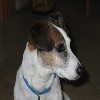I have a 80GB harddrive I want to install and have several questions:
1. Do they make a 3 device cable? I'd like to keep my old drive plus I have a floppy and 2 CD ROM drives (one is a CD-RW the other a CD/DVD combo).
2. When I install the new drive I was going to load Window 2000. Though I'd unplug the old one, make the new one the Primary/Master, load Win 2000 then reconnect old drive (now the slave) and reboot.
3. Don't think I'll need to but will I be able to use the Window 98 op sys on the old drive still?
Any other tips would be appreciated.
thanks, Pete





 Reply With Quote
Reply With Quote


 ). If done incorrectly you could render your system useless. Flashing the BIOS is only recommended if you are actually having a problems (ie: MB doesn't recognize large drives and the manufacturer lists an update that says it corrects that). For the most up-to-date BIOS version, the flash utility, and instructions, you'll need to d/l that from the website of the MB manufacturer.
). If done incorrectly you could render your system useless. Flashing the BIOS is only recommended if you are actually having a problems (ie: MB doesn't recognize large drives and the manufacturer lists an update that says it corrects that). For the most up-to-date BIOS version, the flash utility, and instructions, you'll need to d/l that from the website of the MB manufacturer.